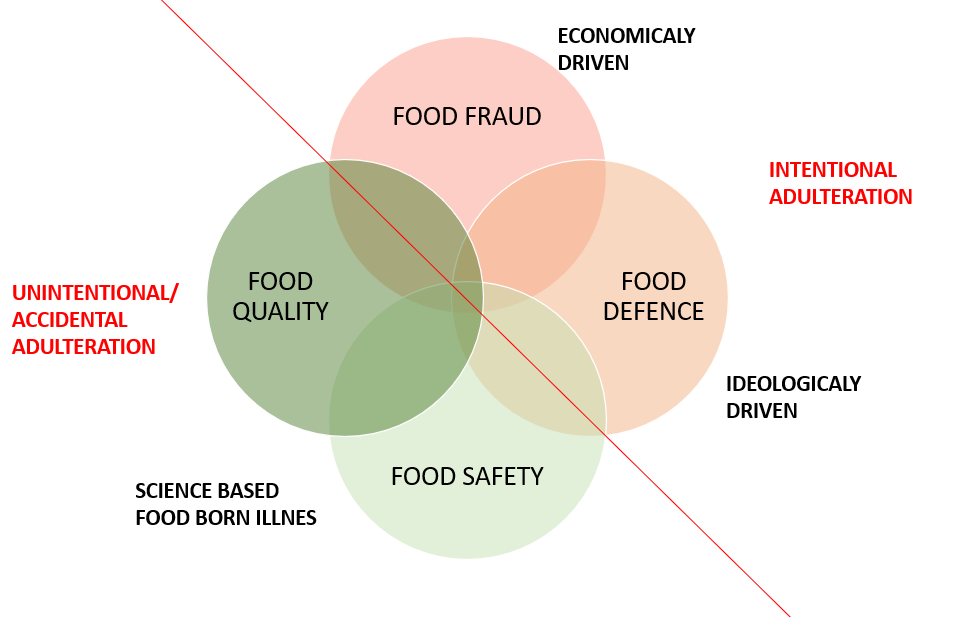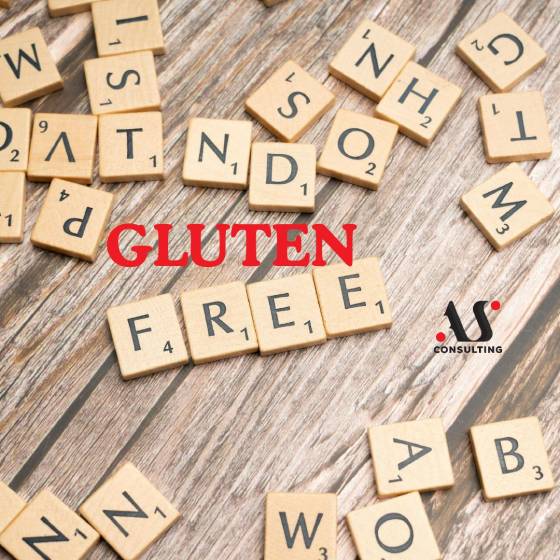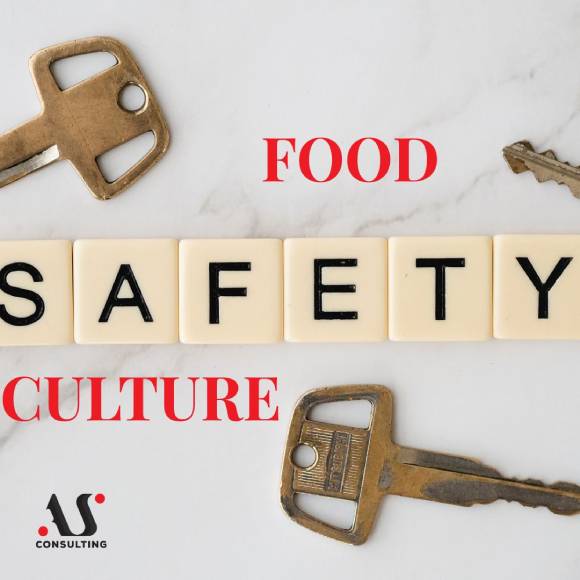
PREREQUISITE PROGRAMS (PRPs)
July 29, 2023
HEALTH AND SAFETY AT WORK
September 6, 2023We talked about the basic terms related to food defense, as well as the requirements of food safety standards, in the text dated May 12, 2021, see: https://asconsulting.rs/odbrana-hrane-food-defense/. However, what can be seen in practice is that not enough attention is paid to this topic, or at least not as much as it should be.
Let’s remember what food defense is. According to the FDA (Food and Drug Administration) definition, “Food defense is the protection of food products from intentional contamination or adulteration where there is an intent to cause public health harm and/or economic disruption.” Therefore, if there is an intention, there is a high probability that it will be realized if we do not implement serious protection measures.
Why was this topic raised in the framework of food safety standards in the first place? Of course, because there is a history of serious incidents of deliberately compromising food safety.
History of food defense incidents
Here are just a few examples of intentional food contamination incidents:
- 1989 – grapes from Chile that were intended for export to the USA contained traces of cyanide; traces of (non-lethal) cyanide were found in 2 tested samples, and the USA and 4 other countries banned the import of Chilean grapes; it was not clearly established whether the grapes were poisoned at the point of origin or during storage, but later analyzes did not establish whether there was actually a risk to human health;
- 2001 – in the Chinese province of Hunan, 120 people were poisoned by noodles containing rodent poison; it was discovered that the intentional contamination was caused by the owner of the facility where the factory operated due to unresolved business relations;
- 2003 – Thai wine with false labels was the cause of death of one person and poisoning of several persons; suspicion fell on competing companies that wanted to damage the reputation of the producer of the disputed wine; later, the investigation led to more serious discoveries: the incident was connected to drug smuggling;
- 1998 – Wakayama, Japan, arsenic added to curry that was used to prepare food for a summer festival: 4 people died and 63 were hospitalized;
- 1981 – “Spanish olive oil” – in 1981, in Spain, the use of oil falsely sold as olive oil caused an outbreak of a previously unknown condition, which was later called “toxic oil syndrome” (violent allergic reaction); Of the approximately 20,000 people affected, approximately 300 died shortly after the outbreak of the incident and a large number of people developed chronic infection. The final toll: about 1,000 dead across Spain; Aniline was added to rapeseed oil, which was sometimes removed on the black market, sometimes not, and the oil was sold as olive;
- 2008 – Chinese milk scandal: The scandal affected milk formulas for children and other milk products in which certain substances were replaced with melamine; 300,000 victims were affected in some way in the middle of this scandal, of which 6 babies died due to kidney disease and 54,000 babies were hospitalized;
- 2009 – American peanuts: Peanut Corporation of America was one of the leading peanut products companies until its products were found to be the cause of the massive Salmonella poisoning in late 2008 and early 2009; 9 people died and 714 (mostly children) survived salmonella poisoning in 46 USA states; The FDA determined that the incident occurred due to falsified laboratory results!!!
Unfortunately, these are just some of the numerous incidents of intentional food contamination. The last 3 mentioned incidents can also be considered a case of food fraud because the intention was to gain economic benefit. Let’s recall the picture where it can be seen that there is a thin line between intentional and accidental contamination, as well as between adulteration and intentional contamination of food:

Preventive measures
What is it that we need and must do, in order to protect ourselves as producers or participants in the food chain from intentional contamination of food? (The economic consequences of such situations, as well as permanent damage to the image of the brand and/or company, should not be emphasized).
The solution lies in creating a functional food defense plan. What makes a food defense plan work?
A food defense plan is functional when it meets all four of the following conditions:
- Created – the plan is documented and signed (risk analysis and mitigation measures);
- Implemented – food defense practices are implemented (mitigation measures implemented and applied to better protect the facility, employees and operations);
- Tested – food defense measures are monitored and validated (The food defense plan should be tested at least once a year. In addition, the check includes whether the food defense practices you have, such as locks and cameras, are functional).
- Reviewed and maintained – the plan is revised at least once a year and as needed (in case of changes that may affect the plan);
If you need training for the Food defense team or you need help with creating a hazard analysis and a mitigation plan, you can consult our agency!!!




